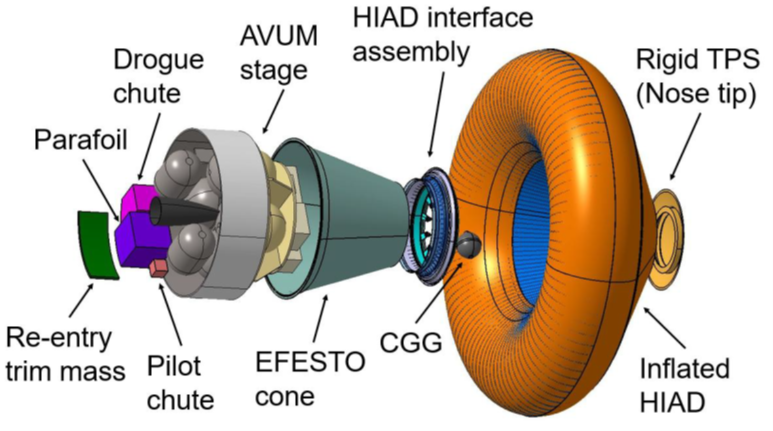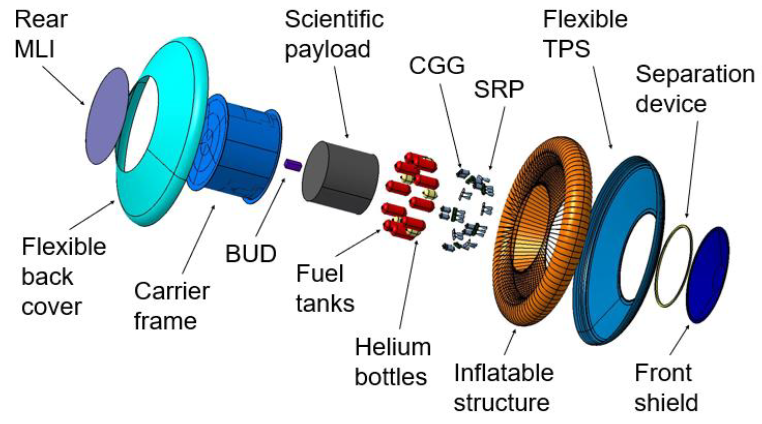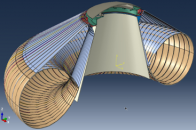The European flexible heatshield through its Consolidated Design Review
As a spacecraft approaches a targeted planet for landing, it needs to decelerate from the high velocity gained during its travel.
During the atmospheric entry aerothermodynamic effects occur challenging the safety of the carried hardware.
In order to have a soft and safe landing, the decelerating and the thermal protection systems play a crucial role.
The most of the interplanetary missions have used rigid heatshields and decelerators, for which scalability is constrainted by the launcher's dimensions. With the limit in increasing the decelerator's size, the landing sites and hence the surface exploration capabilities are limited.
EFESTO aims to developing inflatable heatshields, allowing larger decelerating surfaces to be folded and stored within the launcher's fairing constraints, increasing the exploration capabilities and allowing larger payloads to be landed.
The EFESTO design foresees an innovative inflatable structure with an annulus configuration capable of providing greater shape stability than current stacked-toroid solutions. The inflatable structure is covered by a multilayer of advanced flexible TPS materials that is able to provide the required thermal protection and to adapt to the morphing shape of the inflatable structure, from its stowed to its fully inflated shape, achieved before the atmospheric entry.
 VEGA-AVUM Application
VEGA-AVUM Application
This technology has been studied in details for both a Mars scientific robotic exploration mission and for the recovery and reuse of the European VEGA small launcher upper stage (AVUM) on Earth.
 Mars Robotic Application
Mars Robotic Application
The project successfully completed its Consolidated Design Review on December 15th, 2020.
The next steps include the validation of the technologies and models through ground testing at two levels: a half-scale demonstrator for structural loads and multiple flexible TPS specimens for plasma wind tunnel testing are under preparation, with the goal to bring the technology to TRL 5.
As part of the envisaged technology roadmap, the project will provide also the design of a future In Orbit Demonstration mission to reach TRL 6.
EFESTO is coordinated by DEIMOS Space, responsible also for the mission analysis and for the GNC. CIRA leads the design and loads tests of the inflatable structure, while the Flexible TPS is designed by Aviospace; DLR contributes on the systems engineering and leads the plasma wind tunnel TPS testing; ONERA provides aerodynamics, aerothermodynamic and inflatable structure numerical models; the technology development is framed by the POLITO roadmapping methodologies.
The sucessfull milestone concluded on December 17th with the first Advisory Board Meeting.
The EFESTO team had the pleasure to discuss the results obtained and the way forward with two recognized worldwide experts: Dr. Heiko Ritter (ESA/ESTEC) and Dr. Douglas Fletcher (University of Vermont).
The project respond to the call H2020-SPACE-11-TEC-2018 for “Generic Space Technologies” and has received funding from the European Union’s Horizon 2020 research and innovation programme under grant agreement No 821801.


